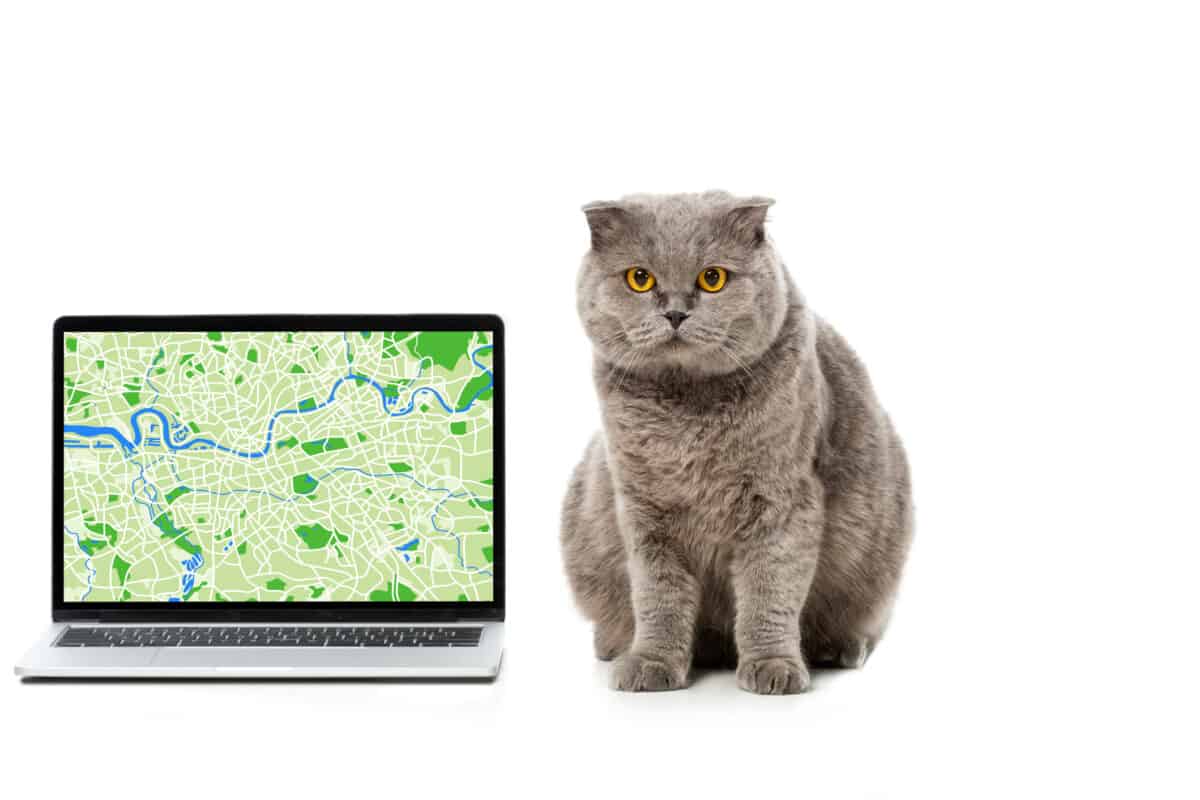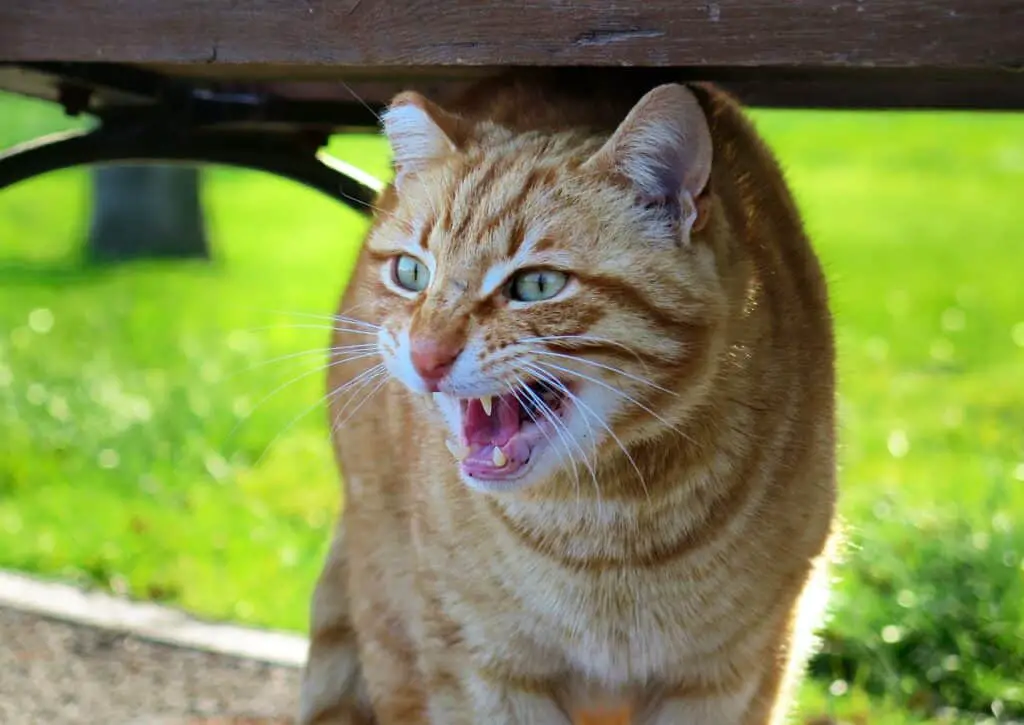The worst nightmare of any cat parent is your cat getting lost. Many of us worry about our cat’s whereabouts when they’ve been gone for a couple of hours.
Over the years, many amazing stories made their way on TV shows and online media about lost cats finding their way back home from halfway across the country.
How do cats do this?
How do cats find their way home?
Cats are good navigators and can find their way back home using their senses, such as unparalleled vision, a keen sense of smell, and outstanding spatial awareness. A cat’s intelligence, combined with its excellent memory, helps them locate their home.
Want to know how to track your cat when they’re away? See our article about cat GPS trackers.
How many cats go missing?
The incredible stories about cats finding their way home over unimaginable distances speak to our imagination and help fuel the illusion that cats can find their way home, no matter what.
Alas, this is not true. Although cats are great navigators and can often find their way home after getting lost, assuming this is always the case could create a dangerous situation for cats.
Because these fantastic stories are so prevalent, they lead to confirmation bias and don’t account for the many thousands of cats that get lost each year without making it back home.
Roughly 18% of all cats go missing (source), and two-thirds of those are never recovered by their owners (source).

What makes cats such good navigators?
Although many cats go missing, you cannot deny that they are good navigators. Their great senses and intelligence are well-known and play a part in their homing abilities.
The following abilities play a huge role in a cat’s navigational skills.
1. Their sense of smell
A cat’s great sense of smell certainly plays a vital role in ‘sniffing’ its way home.
While dogs often get the crown when it comes to having the most excellent sense of smell in the animal kingdom, it’s a lesser-known fact that cats also have an acute sense of smell.
Cats have more than 200 million scent receptors in their noses. By way of comparison, humans have just 5 million.
As a result, a cat can smell about 14 times better than a human. They use this ability (among other things) to recognize each other’s territory and to find food sources.
Cats mark their territories in several ways. They do this by rubbing their pheromone glands against objects or urinating strategically.
Using their sense of smell, cats can recognize even the faintest scent-markers, and they will follow their nose until it leads them home.
2. Superior Eyesight
There is no doubt that when looking at a cat’s well-developed senses, their eyesight aids them in finding their way.
It’s no secret that cats see very well, especially in the dark and in the distance. Their night vision allows them to cover vast distances in the dark and avoid being seen by potential hunters, making travel safer.
Because cats also see very well in the distance, they can easily make out the smallest details from far away to help them determine their best route.

3. Intelligence and logical thinking
Although it might not seem that way sometimes, cats are very intelligent.
Their intelligence will not only help them find a way home when they’re lost by narrowing down their options and choosing the most logical route, but it will also help them survive if they need to fend for themselves for a while.
Cats who are lost and don’t have their owner take care of them usually know how to care for themselves. They know how to feed themselves and catch small prey like lizards, birds, and insects.
This helps them stay safe and alive, even when away from home for extended periods.
Another way that cats use their intelligence to navigate is by remembering points of interest along their route. These could be landmarks, smells, sounds, or other markers.
4. Excellent spatial awareness
Have you ever observed how cats find their way through an obstacle course? They identify the most optimal and fastest route by swirling back and forth.
Even more impressive is that they will memorize this and take the same path the next time.
Another proof of a cat’s good sense of direction and spatial awareness is watching them prepare for a jump. They can calculate exactly how powerful a jump should be in precisely what direction to land on the narrowest ledges.
There is no doubt that this ability is indispensable in recognizing possible routes and ways to get to where they need to be.
Their spatial awareness also helps cats recognize landmarks and work out their location relative to where they need to go. This is comparable to how we humans remember a route; by finding recognizable points along the way.
5. Their connection with nature
While it is certain that the things mentioned above help cats navigate their way home, there seems to be more to it than that.
Maybe we simply cannot believe that a tiny animal like a house cat can cover vast distances of unknown terrain, conquer many perils and find its way home safely.
This leads many of us to believe there is some ‘secret sauce’ to a cat’s homing abilities.
The truth is that cats, like any animal, are much closer to nature than we humans. As such, cats are better at reading natural signs and picking up trails and familiar scents.
Many centuries ago, when humans were much closer to nature, we would probably be better at finding our way as well. Our modern technology has made us utterly helpless without our phones, google maps, and clear signage.
Unproven theories about cat navigational abilities
Because of their strong sense of direction, cats that go missing can find their way home over seemingly vast distances. Apart from the most obvious and logical reasons outlined above, there are many theories about how this can be possible.
Although some of those are entertaining or could have some merit, let us stress that very little actual scientific research has been done to prove those theories.
Nevertheless, there could be some truth in these.
1. A cat has an internal compass
This theory has merit because it has been scientifically proven that many animals can sense the earth’s magnetic field and use it to navigate.
In doing so, they can find their bearings, just like a compass points to the north because of the geomagnetic field. If cats find their way with the help of this feature, it dramatically improves their sense of direction.
We know for a fact that animals like salmon, deer, tortoises, pigeons, penguins and even whales navigate like this.
This theory is fuelled by the fact that cats have relatively high iron concentrations in their ears. This leads scientists to believe cats can also use an internal compass.
However, to date, this has not been conclusively proven.
2. Cats navigate by the stars and the sun
Another extraordinary theory is that cats could find their bearings by gazing into the night sky. Supposedly, they could tell which way by looking at the milky way’s orientation.

While this sounds like sorcery, this is actually how the Scarab Beetle finds its way. By using the stars as a sort of ‘cosmic compass’ they can orientate themselves.
While this sounds amazing, we think it’s unlikely that our feline friends will navigate like this. It has never been scientifically proven.
If anything, animals, in general, could conceivably find their way by looking at the sun’s position, but no study has shown that the sun, or any other heavenly bodies, play a big part in how cats find their way home.
3. Cats use quantum navigation
The quantum navigation theory has been posed and may be the most outlandish theory.
It sounds like this could be a feature of the Starship Enterprise rather than a cat’s navigational abilities.
This is not the place nor the time to give you a lesson on quantum theory, and we won’t. This theory is based on Bell’s Theorem. In its most basic form, this is about how two particles on a molecular level are connected, know each other’s ‘state’, and influence each other’s behavior.
It has been argued that cats can somehow sense this, and they would then be able to find particles connected to the ones in their home territory.
They could follow these particles as if they were bread crumbs, showing them the way home.
Frequently Asked Questions
Do indoor cats run less risk of getting lost?
Counterintuitively, indoor cats do not run less risk of getting lost. According to Lost Pet statistics, 40-50% of all cats reported as missing are indoor-only cats. Indoor-only cats may be disadvantaged in finding their way home since they’re not used to navigating the outside world.
From what distance can a cat find its way home?
There is no specific distance over which cats can find their way back home. As long as there is a trail for a cat to follow, they are likely to get back home. Scent markers, landmarks, or sounds can help your cat get a sense of direction.
What can prevent my cat from finding its way home?
Even if your cat can find a trail to follow back home, there might be several threats on their way that could prevent them from getting home. For example, your cat might be injured, someone might have taken her home assuming it was lost, or cold weather or rain can slow her down.
How far can a cat travel in a day?
A cat’s regular walking speed is 2-3 mph, but it can reach up to 30 mph for short periods when running. On average, cats can cover between 5 and 10 miles per day. However, this does not mean they usually travel that far from home. Instead, they meander within their territory.
Can a cat smell their owners?
Cats have an excellent sense of smell, 14 times stronger than humans. They can recognize your specific scent easily.
They also mark their owners with pheromone glands on their heads and paws. By doing this, they mark you as their “possession” and tell other cats to stay away.
Love Reading About Cats?
Have a look at these other great posts on our website.
-

10 Ways to Make Your Cat Live Longer
The oldest cat to ever live passed away at the old age of 38. On average, household cats live between […]
-

12 Reasons Why Siamese Cats Cry at Night
Siamese cats are a popular breed of cats that many people choose to have as pets. Perhaps you have heard […]
-

15 Incredible Ways That Cats Show Affection For Humans
Wondering how cats show their affection for humans? We have listed several incredible ways that cats are trying to show their love for us.
References
Homing powers of a cat: Homing powers of lost cats:
https://www.missinganimalresponse.com/lost-pet-behaviors/missing-cat-study/
https://lostpetresearch.com/
https://www.aspca.org/about-us/press-releases/how-many-pets-are-lost-how-many-find-their-way-home-aspca-survey-has-answers
https://www.jstor.org/stable/6677#metadata_info_tab_contents




